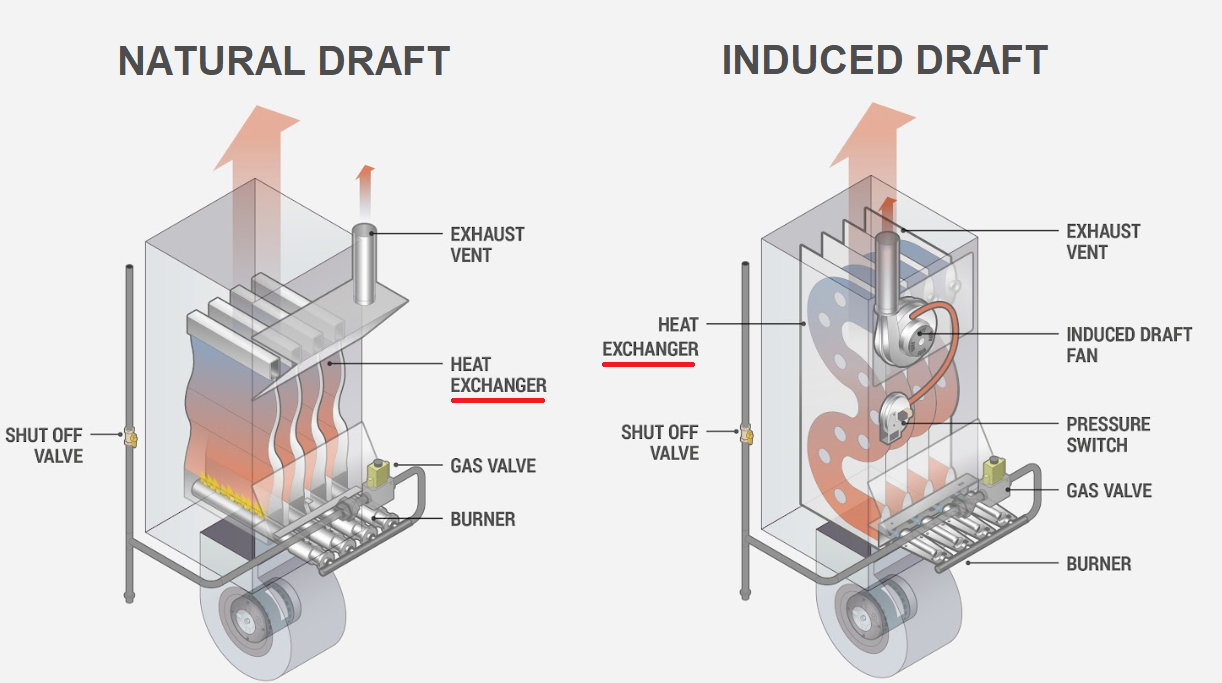Get Tech Tips
Subscribe to free tech tips.
Heat Exchanger Crack Diagnosis

There are two camps I've run into regarding cracked heat exchanger diagnosis. There are those who look for it everywhere and those who dismiss it and never look.
I will start by saying that everything I write here is my own opinion and experience. Because this is such a hot-button topic, don't take my word for any of this; follow manufacturer guidelines, industry standards, and codes. Also, unless you are a trained and licensed HVAC professional, STOP READING. Gas appliances should only be repaired by industry professionals.
Heat exchanger cracks are worth finding, but they often aren't the most dangerous issue for your customers.
The reason I make this blasphemous statement is twofold:
- Many heat exchangers are at a negative pressure in reference to the air moving over the exchanger. That means that the air from the return will move into the exchanger rather than combustion gasses moving into the airstream.
- So long as the combustion process is complete, there won't be significant CO (carbon monoxide) in the flue.
But let's be clear. If there are any cracks in an exchanger, it needs to be replaced. There should NOT be cracks in a heat exchanger. The trouble comes in when we think that looking for cracks is the only or even primary method of finding CO issues with a furnace.
When we rely on our eyes to find every issue, we can easily miss problems (including cracks) that our eyes can't see. So, here are my suggestions on how to find cracked heat exchangers and other furnace safety issues.
Ambient Carbon Monoxide

One of the first things you should do is measure ambient CO in the conditioned space while the heat is running with either a combustion analysis tool or a personal CO detection device. Anything other than ZERO ambient carbon monoxide is worth investigating. Sure, smoking indoors or cooking can increase ambient CO above zero, but when you see it, take the time to INVESTIGATE.
Flame Displacement

One of the oldest ways to check for heat exchanger cracks is to simply observe the flame when the blower starts. Most furnaces will have a blower delay to get the furnace up to temperature before moving air over the exchanger. This procedure is as simple as watching the flame and observing if the flame moves or changes when the blower starts.
Because the burner and heat exchanger is isolated from the airstream, there should be no change in the flame when the blower starts. If there is, you need to begin looking for a connection or leakage between the burner/heat exchanger and the air.
Combustion Analysis

Testing combustion won't necessarily tell you if you have an exchanger leak, but it will tell you if you have a high CO, which can help you prevent a dangerous situation for your customers if there is an exchanger crack.
Exchanger Isolation Pressure Test
When you suspect the system may have an exchanger leak, you can place a manometer probe in the exchanger and seal off the inlet/outlet of the exchanger as best as you can (with the gas shut off, obviously). Next, turn on the blower and see if there is a change in the exchanger. Any change is an indication of a heat exchanger leak.
Visual inspection

In some cases, an old-fashioned visual inspection makes the most sense, either by removing the blower or the high limit (or both) and using a mirror or borescope to inspect. When you do find a cracked exchanger, quote it for repair and turn the furnace off.
While finding cracked exchangers is worthwhile, I would place it below or on par with other things like:
- Testing for spillage due to depressurization in the combustion air zone
- Insufficient combustion air
- Blocked intake and/or exhaust
- Recirculation of combustion products into intake vents or soffits
- Gas pressure testing / clocking the meter for overfiring or underfiring
- Testing heating airflow
- Testing for CO in the occupied space
- Visual inspection of vents, flues, and chimneys for proper installation, as well as gaps and cracks
- Visual inspection for return gaps pulling in air around the furnace
When you do find exchanger cracks on newer units, you need to also look for causes like low airflow, incorrect orifice size, or overfiring that could have caused the issue.
Keep your eyes open, and don't get fixated on a single issue to keep your customers safe. While you are at it, read this great combustion guide from Accutools and Jim Bergmann. Jim also gave an excellent presentation about advanced combustion analysis at one of our past symposiums. You can watch that presentation HERE.
—Bryan











Comments
I’m not a trained nor a licensed blah blah blah blah, but you def ain’t just another pretty face Mister!
Chapeau my friend!!
I’m not a trained nor a licensed blah blah blah blah, but you def ain’t just another pretty face Mister!
Chapeau my friend!!
John Shuster Place a “T” in the hose between the draft inducer and the pressure switch. Place a manometer on the open end. Start furnace, take note of reading with draft inducer fan only and then when the circulating fan comes on. Reading should remain constant.
John Shuster Place a “T” in the hose between the draft inducer and the pressure switch. Place a manometer on the open end. Start furnace, take note of reading with draft inducer fan only and then when the circulating fan comes on. Reading should remain constant.
To leave a comment, you need to log in.
Log In